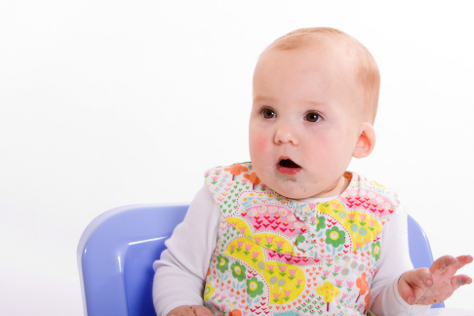How to tell if your baby really is hungry
Here’s how to look out for ‘Early’ versus ‘Active’ feeding cues

Ok so crying might seem like the obvious clue, but be aware that there are some much earlier, more subtle signs that your baby will give you to show they are ready for a feed - way before they begin to cry.
It’s important to recognise these as if your baby has been crying you’ll be needing to calm them before offering your breast. Also, when a baby has been crying their tongue is elevated to the top of the mouth which can effect their ability to latch on and sucking rhythm - and if they're tired from being upset, only take a small feed before falling asleep.
Essentially, you’re learning to look for these early feeding cues – it’s these cues, not the clock (or crying) that guide you when it comes to the frequency of feeding.
You might find that at first you feed your baby much more than you expected to but do look for your baby to give you these subtle cues that they are ready to feed long before they begin to cry. By responding to these early clues your baby will soon become more efficient at feeding and over time feeds will become quicker too.
Early feeding clues
- Smacking or licking their lips
- Opening and closing their mouth
- Making sucking noises and trying to suck on their fingers, fists or clothing
Crying is a LATE hunger cue
If early feeding clues are missed, a baby will start to give more active ones, such as:
- Turning towards anything touching your baby’s cheek
- Rooting around on the chest of whoever is holding baby
- Squirming and fidgeting into position for a feed
What if I don’t wake to my baby’s hunger cries?
Don’t worry, it’s unlikely that you will wake up to your baby wailing. There is evidence that shows that by keeping your baby close at night (safer sleep advice recommends sleeping in the same room as your baby for the first six months) your little one will mirror your own sleep cycles, so you will be able to wake to their warning clues easily rather than be woken by them from a deep sleep.
Is my baby getting enough breastmilk?
You’ll soon feel confident that your baby is getting what they need as your baby will let you know, but at first, it’s natural to wonder if your baby is getting enough milk. Meanwhile wet and dirty nappies are a good indication.
From Day 4 and every day for the first few weeks, baby should do at least 2 soft yellow poos about the size of a £2 coin. From Day 5 and onwards, your baby usually produces at least 6 wet nappies every day.